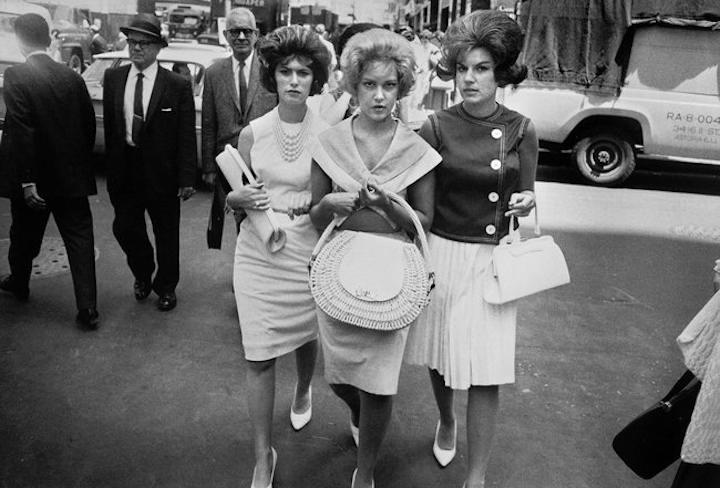Garry Winogrand at the National Gallery
Often placed within the “social landscape school,” Garry Winogrand’s photographs turned ideas about documentary photography literally on edge when his work appeared in exhibitions during the 1960s. Self-taught, with Walker Evans’ book American Photographs as his sole reference to the history of the medium, Winogrand operated through a visceral response to situations he encountered. Visually expansive, yet confined to their author’s emotional range, the subjects were often shot on an angle and studded with seemingly extraneous detail.
Winogrand’s scatter-shot way of cramming 38 possibly decisive moments onto each 36-frame roll of film he exposed characterized
his approach to making pictures. For him, shooting the film was the essential part of photography; he was less interested in what happened to the pictures afterward, and left the editing of his images
up to whoever wanted to give him an exhibition. But the urgency of the action squeezed inside the frame of his wide-angle view changed the way we view the world through photography.
An untitled 1961 Winogrand photograph of three women on a New York City
street. Estate of Garry Winogrand/Fraenkel Gallery, San Francisco.
Following his death in 1984, Winogrand’s archive was consolidated at the Center for Creative Photography (CCP) in Arizona. It was only then that the staggering scale of what he had created became evident: more than 35,000 prints, 22,000 contact sheets (nearly 800,000 images) and 45,000 35-millimeter color transparencies. Even more startling were the 6,500 rolls of film that he had never bothered to process and proof.
The first major U.S. museum exhibition of his work since 1988, which originated at SFMoMA, will open on March 2 at the National Gallery of Art in Washington. Organized by Leo Rubenfien, a photographer who knew Winogrand well, the exhibition includes 275 images, half of which have not been shown before.
Mr. Rubinfien writes in the catalogue that the most successful pictures, in Mr. Winogrand’s mind, were the ones “that told you that the world was a jumble of fragments, that the truth was more complex than any account could be.”
Garry Winogrand, March 2-June 8, National Gallery of Art, Washington, DC. Information. The exhibition will then open at the Metropolitan Museum of Art, New York City, at the end of June. Information. The exhibition catalogue Garry Winogrand (448 pages; $85 hardcover; $50 softcover)—published by SFMOMA in association with Yale University Press—includes five new essays and nearly 400 plates. Information.


